11 Secrets for Using Chrome Bookmarks
Chrome bookmarks let you easily mark down the pages you want to revisit. But, partly because it’s so easy to bookmark a page, bookmarks can get a little out of hand. Sometimes it can be tough to find the bookmarks you want. And even if you’ve got the basics down, there’s a ton of Bookmarks functionality most people don’t know about.
First things first: Where are the bookmarks?
If you can’t see any bookmarks at the top of your browser window, directly below the omnibar, you might have your bookmarks bar set to “do not display.” To fix that, open the Chrome menu, mouse over Bookmarks, and select “Show Bookmarks Bar”:
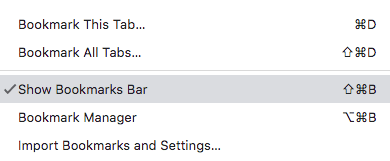
You might also have other Bookmarks folders, including Mobile Bookmarks. For the sake of this post, we’re going to start with the least-known tips and then move on to ideas for getting the best out of the standard Bookmarks setup.
1. Icons only
Text takes up space in your bookmarks bar, without doing a lot for you. You can recognize Gmail, Paypal, Bootply, Drive, Ahrefs, or any other tool you frequently use, by its distinctive favicon—the tiny version of its logo that accompanies the text. So why not eliminate text altogether?
This is easy to do: when you add a new bookmark in the usual way, just delete the text that goes with it.

Then, when you save the bookmark, the favicon shows in the bookmarks bar without text.

See how much less space the FYI favicon takes, compared with the G Suite favicon plus description?
2. Chrome profiles
Chrome profiles let you build separate settings, browsing histories and also separate bookmarks. Some people use these for different areas of their lives—work vs personal, or school vs personal. It eliminates the need to have more than one browser, and lets you keep the advantages of using Chrome, which are particularly useful if you also use Drive and Gmail a lot.
Nearly half of Americans have a side hustle of some kind, and 35% of American workers are freelancing now. If that’s you and you have more than one client, consider setting up separate Chrome profiles for each client, complete with the bookmarks you need to do the work for them.
To do this, click on your profile picture in Chrome and select “Add,” then put in your details to create a new profile.
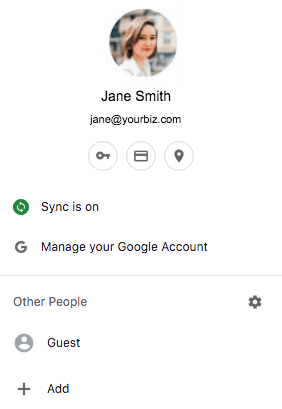
To switch between them, click your profile picture, select the profile you want to switch to, and sign in.
3. Bookmark manager extension
Chrome extensions build modular functionality into the browser—some of which is somewhere between awesome and indispensable—as well as acting as a testing-ground for new tools inside Chrome itself.
Chrome periodically updates its own bookmark management system, making bookmark management extensions obsolete in the process. Chrome’s native Bookmark Manager is in the Bookmarks tab in the Chrome menu. Alternatively you can access it here: chrome://bookmarks. Here, you can see all your bookmarks folders, move bookmarks from one folder to another, and add, rename, and delete bookmarks.
However powerful Chrome’s built-in Bookmarks Manager is, there are some things it’s not great at. Currently, there’s an extension available from Aureol Labs on the Play Store, offering restore session page, search, and better history and searchable bookmarks that can be searched directly from the extension popup.
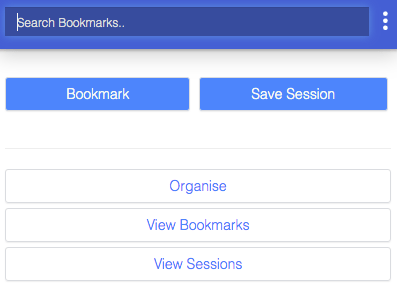
4. Google Keep extension
This official Google product lets you save items directly to Keep from the web, eliminating the need to fill your bookmarks bar with things you don’t want to forget or lose, but won’t need repeatedly.
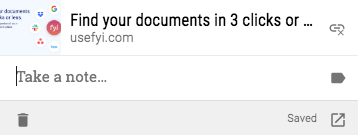
You can take notes on what you save, capture URLs, images, and text, and organize the content you save. It makes a handy companion to your bookmarks.
Now, let’s talk about how to get the best out of Chrome’s native bookmarks functionality. As is often the case, while Chrome works well as-is without any special knowledge, spending just a little time under the hood can mean you get a ton more out of your browser. Here’s how to make your bookmarks work for you.
5. Create a scheme and regularly check it
If you’re going to use Bookmarks extensively to manage your browser activity, you need to build a scheme so you don’t just slowly drown in 654 untagged, undifferentiated bookmarks that take tens of minutes to scroll through. Yes, that is the voice of experience.
Use folders the way you might on a desktop. You can nest folders—so you can have Social Media > Twitter, or To Do > Client > March. Whatever taxonomy makes sense to you. Just make sure that you stick to it and that it doesn’t get too cluttered. Checking and clearing monthly is a good idea.
All the other tips in this post will work a lot better if you do this, and you’ll actually be able to find things you bookmarked.
6. Bookmark all tabs
If you’re working, you’ll often have multiple tabs open simultaneously. (I have 12 right now.) When you switch tasks, you don’t always want to open another 12. And you don’t necessarily want to go through all your open tabs and bookmark them one by one to return to them.
You can use a Chrome extension, like the excellent and very useful OneTab, but you can also simply bookmark all your open tabs simultaneously.
Windows and Linux users should use CTRL+Shift+D for this. Mac users use CMD+Shift+D. You’ll get this window:
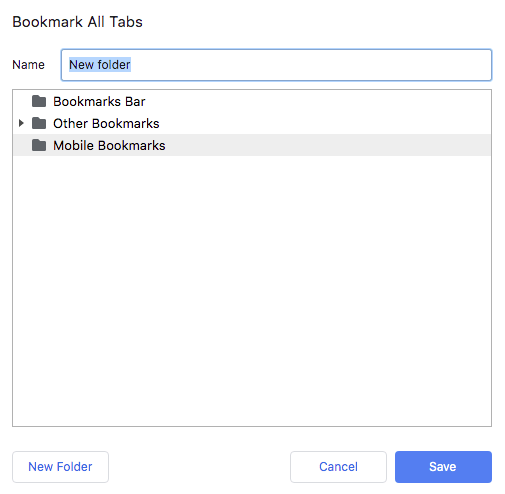
Create and name a new folder for your open tabs in a couple of clicks, then return to them whenever you need to.
7. Backup your bookmarks
Chrome will let you save as many bookmarks as you want. Anecdotally, once you get up into the thousands, they can seem to act a little strangely, but there’s no number limit.
That doesn’t mean that things you bookmarked five years ago are still relevant now. But you might find you want them in a week, or a year. Research materials, suites of specialized tools for particular tasks, or just an online reading list you’re struggling to catch up on could all fit this bill.
If this is you, consider backing up your Chrome bookmarks. You can export bookmarks as an HTML file to your computer, then re-import them when you need them again.
To do this, go to the Chrome menu and select Bookmarks, click Bookmark Manager and then select the vertical dot menu in the top right-hand corner of the Bookmarks Manager window.
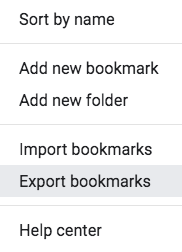
8. Bookmark Restart
Although it’s relatively stable, Chrome can glitch or crash periodically.
When that happens, you can close and relaunch—or you can restart from chrome://restart. Use this and you can quickly restart your browser without losing any of your open tabs. (You will lose the contents of those tabs: you’ll be back at the same websites, but interactive elements might be different and you might lose text you’ve entered in forms, for instance.)
Add it to your bookmarks bar and you can restart Chrome by simply clicking the icon (yes, you can use the favicon-only bookmarks tip here too).
To do this, bookmark any page, then click “More” in the bookmark window to edit the bookmark. Erase the URL of the webpage you’re on and replace it with chrome://restart.
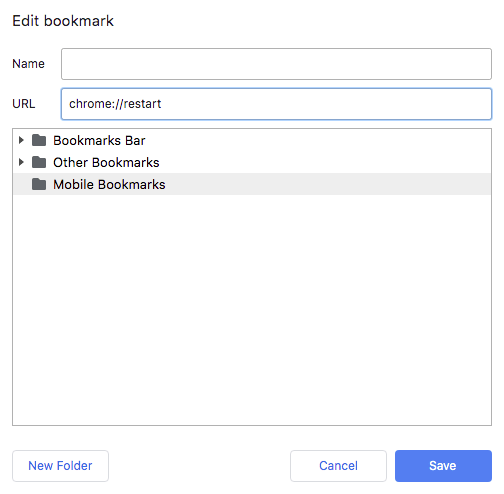
Save it with no name, and it will appear in the bookmarks bar like this:

To restart Chrome instantly, just click that icon.
9. Bookmark your bookmarks
Not as needlessly meta as it sounds, this is actually a hugely useful tip if you use bookmarks for everything. If you’re using the bookmarks manager as a kind of file storage and retrieval system, it makes sense to add it to the bookmarks bar.
You can use the same procedure as above to add the bookmarks manager as a favicon to the bookmarks bar. The good news is, it uses a different favicon to restart so you still don’t need a bunch of text taking up space in your bookmarks bar.
Bookmark any page, go to “More” and replace the URL with: chrome://bookmarks. Erase the name and click Save, and your bookmarks bar will show this:

That’s your bookmarks manager.
10. Import bookmarks from other browsers
Chrome lets you import bookmarks as well as export them. If you want to pull in all the bookmarks you used for a project in a previous browser, or if you’re switching from using several browsers to using several Chrome profiles, you can do it easily. Here’s how.
Open the Chrome menu and hover over Bookmarks. You’ll see “Import Bookmarks and Settings…”:
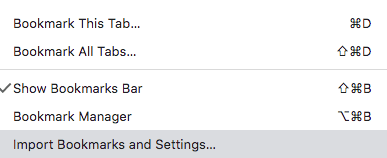
You can also find this option in Settings, which will open automatically when you select it anyway.
Click that, and you’ll be asked where to import bookmarks from. You might have to export bookmarks from some browsers as an HTML file: Chrome imports automatically from Firefox and Safari but doesn’t seem to do the same with Opera or Vivaldi, for instance.
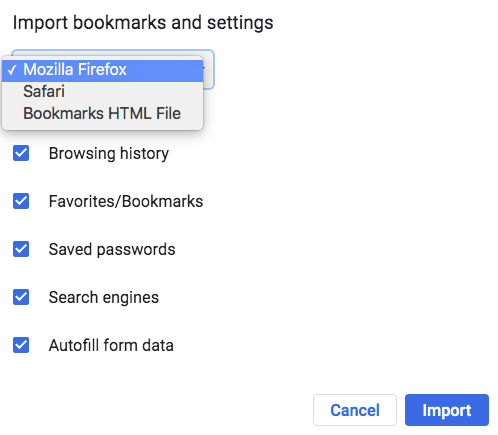
You can also select which details you’d like to import.
Once you click “Import,” you’ll be notified when the process is complete:
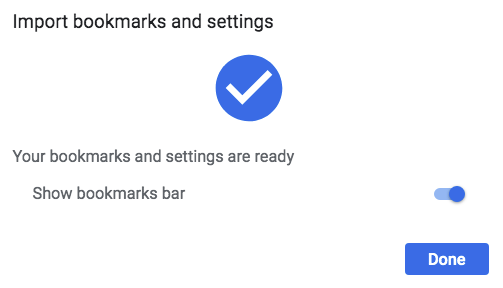
You’ll need to close all the windows of the browser you’re importing from before this works.
Your imported settings will show up at the end of your bookmarks bar, or if you have so many that they extend off the edge of the bookmarks bar, they’ll be at the bottom of the Bookmarks Bar dropdown:

11. Picture-in-picture (PiP) autoplay
Picture-in-picture playing lets you watch videos while you use another application. If you’ve bookmarked Youtube videos for work and want to watch for key ideas while you’re actually working, this can be incredibly useful.
To make this happen, add this script in the URL of a new bookmark:
javascript:(function() { document.querySelector(‘video’).requestPictureInPicture() })()
Put that bookmark in your bookmark bar, and click it whenever you open a video that you want to watch PiP.

